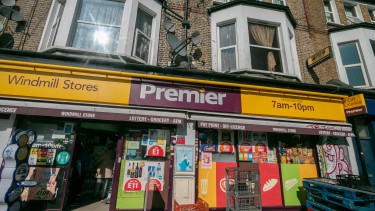From retirement bonds to home insurances - Will the Hungarian gov't upset the whole scene?
Péter Kisbenedek: 2018 was a good year indeed, at least for Allianz Hungária. This can be partly attributed to economic growth and milder than usual catastrophic weather losses. Looking ahead to 2019 as a whole, market prospects seem positive: take, for example, vehicle sales, which surged to pre-crisis levels, or the real estate market boom and the upswing in economic activity. These factors are set to improve the premium income from motor insurances, home insurances and property and casualty products, respectively.
There is still no reason for a gung-ho attitude here: market participants need to tackle such serious challenges in the coming period as the need for further efficiency improvement, modernisation, digitalisation and compliance with changing - mainly tightening - regulations. It is especially characteristic of the Hungarian market that even though everyone is fully aware of the challenges, a real breakthrough fails to materialise in most of the cases.

There is an abundance of fintech and insurtech solutions that are theoretically available to any insurer at a low cost. The question is how quickly and efficiently can traditional insurers adapt them to their own operating models that are not necessarily rooted in this modern, digital world. Indeed, these solutions take care of a number of sub-tasks, but the faster operation should also be supported by the back-office, the administrative area and internal information technology.
Another important task is to simplify and increase the transparency of insurers’ traditionally complex or overly complicated product structures, which are often too difficult to understand for customers.
The group-wide, global strategy of Allianz for the coming period is called ‘simplicity’ and essentially, its purpose is to shift the operation of the group to a far simpler, easy-to-understand product range, which not only enables the insurer to offer quicker service but also makes it compatible with these new, extremely inexpensive technologies. I can also see great potential in artificial intelligence, which may take risk assessment, claim settlement and administration to a whole new level.
At this day and age it is really easy to access a variety of insurance products with just a few clicks. How much of the additional simplification will be perceived by the customers?Currently we distribute insurance products that are essentially modularly structured, consisting of a base product and supplementary products linked to it through various modules. Compared to this, there is substantial market demand for insurance packages that contain the most important covers simultaneously, allowing for much faster contract conclusion, better customer experience or higher customer satisfaction.
This is what Allianz is trying to achieve everywhere in the region. If you look at a broker’s website today, you will be confronted with a staggering selection of supplementary products to choose from, but customers are often unable to pick just the one that they need. Even if they cannot put into words precisely what they need, they expect to get it as quickly and simply as possible.
Among friends I often say that the difference between the old and the new concept is that men tend to spend days studying the configurations of a European-manufactured car to select optional extras which may ultimately double the price of the car compared to the base model. By contrast, cars manufactured in the Far East are available in option packages. This does not mean that Far Eastern simplicity overcomes European complexity; personal advice, for instance, may continue to provide the means for precisely tailor-made, albeit more expensive, insurance packages.
The digital world, however, demands that insurers offer simple and transparent solutions as quickly as possible. The rate and commitment at which they will grab these opportunities are up to their management and owners. To me, this is the most basic question to answer if we are to retain our medium-term market position and profitability.
Apparently, the digital transformation had a smaller impact on life savings plans: they are still dominated by personal sales while their premium growth falls behind non-life products. Isn’t that a reason for concern?
Life savings plans are successful in countries where they are combined with some kind of state incentive, such as a tax break. Penetration will be lower in countries where the state does not provide such incentives. Pension insurance has also grown dynamically in Hungary in recent years, but other unsubsidised long-term savings vehicles are not that popular; in fact they took a downturn in the past period. Their growth is not supported by the low yield environment either.
As regards life insurance, I believe that the propagation of term insurance products is the greatest challenge to tackle in the Hungarian market; we have been struggling with low penetration for a long time now. Quickness, simplicity and perseverance are extremely important in this area. It is impossible to predict exactly when, but things will eventually take a turn and this market will start to function in earnest. Meanwhile, we should continue to experiment and carry on with the quick and vigorous operation.
Looking back on a two-year horizon, can you decide whether the ethical life insurance regulation was a success or a failure?
Being aware that some market participants did not always bear in mind the solutions best serving the customers’ needs, I have always supported the crafting of this regulation. Since the market is unable to regulate itself in this regard, 10 years ago we started to work out - in conjunction with MABISZ - a total costs charged (TKM) indicator similar to the APR. Our goal was to ensure comparability and transparency to enable customers to see who imposes costs on them and what costs are being charged. The ethical regulation was built on this foundation. I think for those who have long-term plans in this market - as all insurers should - the regulation is definitely positive news.
The short-term sacrifice this entails in newly acquired portfolios will not necessarily be reflected as a negative factor in long-term premium growth as it is far more profitable to retain existing policies. Agents or intermediaries who are unable to distribute the products as required by this concept will exit the market.
Everyone should accept that there was a need to improve the distribution efficiency of life products especially now, in this lower yield environment, or otherwise the customer would be left with nothing of the low market yield.
As regards life insurance, the role of the banking channel will undoubtedly increase, as its current share in the Hungarian market is at a historic low compared to other European markets. The ongoing surge in lending also supports this expansion. Participants operating with unsustainably high costs have no room in an efficient market, but I can see a great future both for honest tied agents and independent networks. I expect those participants and channels to flourish that can ensure long-term efficiency for insurers and customers alike.
The market may not be able to support so many intermediaries, and the drastic fall in the number of intermediaries over the past few years was no coincidence. Wielding a stone hammer will not make you successful in the insurance market today, and agents must improve their skills ceaselessly to gain more negotiations and achieve a higher success rate.
Is it possible to sell life savings plans purely online?
This seems fairly difficult in and of itself. However, considering that financial data will be practically free to use and reuse across the EU in the near future - in other words, it will be possible to utilise banks’ heretofore isolated patchwork of customer data on the same platform -, life insurances may become a part of investment portfolios that can also be successful on online platforms.
Accordingly, if you are to make successful sales on online platforms, you will have to offer life products in a package with other savings schemes rather than individually.
Will insurers also create such platforms?In legal terms, anyone can go ahead and do this shortly, but I see no such intention in the market for the time being. There will be a revolutionary change in the market; even independent providers may start to collect dispersed bank, investment and insurer needs and offer solutions on a single platform, even with the support of artificial intelligence.
The government is planning to launch a new retirement savings product, which could be a potential competitor to existing products eligible for tax benefits. How will this affect pension insurance products, the current drivers of the life insurance market?
Additional details have just been disclosed about this solution. Apparently, this instrument will also be subject to a 20-percent state subsidy, as is the case with other retirement savings. Nevertheless, I do not believe that the government retirement bond will seize an overly big chunk of the market from the existing market participants; in fact, another option for self-reliance may well expand the market.
According to the latest announcement, we should expect a scheme similar to baby bonds. Although I think the baby bond as a product has many advantages, the government continues to face the challenge of distributing its product to investors without its own intermediary network.
Retirement insurance products offer a more diversified investment opportunity; besides government securities, customers can also invest their funds in stocks and other instruments, and not only in Hungary in forints but also in other currencies for foreign securities. The active investment activity of insurers and fund managers may also be a competitive advantage.
A change has already come into effect earlier this year when tax credits on health insurance provided by employers were eliminated. In your opinion, what are the consequences of this change?
I think this step is regrettable with inevitable negative consequences both in the health insurance market and in the use of healthcare services. It may even restrain the growth in health insurance premiums. It is a pleasant surprise, however, that many employers continued to offer this scheme regardless. This is because, given the current position of healthcare, there is heightened demand by employees for this coverage. Waiting lists do not pose an obstacle. We actually had a colleague whose life was saved thanks to the health insurance scheme when a serious disease was discovered at a very early stage and, due to the early detection, the patient was able to recover.
Let’s look at another insurance product: according to the MNB, there is insufficient competition in the homeowners insurance market. Do you agree?
No. It is a daring thing to say with so many insurers and offers in the market with such diversified distribution systems. The fact that this segment is not as dynamic as, for example, the MTPL segment, can be attributed to the nature of the product. It is not only in Hungary that people do not change their home insurance every six months; this is a stable market by definition.
Another claim, namely, that well-established participants sit far too comfortably on the portfolios amassed over the years, is also inaccurate: if this product had been overpriced by anyone, new entrants would have torn the market to smithereens a long time ago.So the regulation of this market is uncalled for despite the fact that, according to the MNB’s analysis, customers see only 39 forints out of every 100 invested?
In our case this number is well above 50 percent. The MNB intends to somehow regulate this market as well, and rightfully so, I can agree with that. The regulator may take consumer protection steps to heed certain expectations, but I have serious doubts as to whether this will lead to a more active movement between the portfolios and a substantial price decline.
There is increasing media coverage on climate change, a factor that also affects homeowners insurance. Is there any relevance of this concept in 2019 in the Hungarian market?
In this regard, it is storms that pose the greatest problem in Hungary for the time being. Although 2018 was a lucky year, we have seen a few years when numerous smaller storms wreaked havoc with a tremendous amount of damage, primarily to homes and agriculture. This is not reflected in prices so far, but as a future trend, insurers will definitely introduce far more sophisticated risk assessment models with a capability of setting up risk profiles even at individual property level.
Extremely sophisticated methods are already in place for this purpose in the USA, relying on satellite images and artificial intelligence to analyse expected damages in advance and to identify the properties that are most likely to sustain damage during a natural disaster. In some countries, digitalisation has turned the market upside down already.
Insurers enjoy a far more comfortable position in the motor insurance market nowadays than 5-10 years ago. Is the current market healthy in your opinion? How long can the market keep premium growth well above the inflation rate?
This market operates under normal conditions; competition is fierce and our premiums are still significantly lower than the levels seen in neighbouring countries, not to mention Austria or Germany. In setting its premiums, Allianz needs to take into account the increase in service fees, for example, which is basically the consequence of rising labour costs.
All insurers working in this area do their best to improve efficiency through all kinds of digital solutions. This area is very suitable for these endeavours. Over the medium term, of course, the proliferation of self-driving vehicles and car sharing will shake up the market.
I am extremely pleased and proud that the sector was capable of taking this step. In this digital world, embracing the idea of creating sector-wide standards is highly justified. The E-claims report service is the first example of this. Several insurers have had similar programmes in the past, but they were all limited to their own customers and did not gain ground in the MTPL segment where damages are typically incurred by the customers of another insurance firm. I am also very pleased that the service was put together in a relatively short timeframe. It is clear that despite the not too intense advertising campaign, the app has gained tremendous popularity with more than 100 downloads, which indicates how useful it can be in case of an accident.
Will you stop here or the E-claims app may break ground for additional developments?
What we managed to get off the ground now is a basic application, but it has further significance for insurers from two perspectives. Firstly, additional functions can be added to it to the benefit of customers, which will help them contact with a number of parties on extremely short notice in case of an emergency on the road: roadside assistance, taxi, family members.
In addition, a bunch of other convenience functions or practical functionality can be installed on it, which will increase customer satisfaction on the one hand, and facilitate the widespread use and utility of the application on the other hand.
Secondly, another important message for the sector is the need to create platforms that can promote the development of the whole industry without causing a competitive disadvantage to anyone or restricting competition in any way.
The next task of the digital working group of MABISZ is to develop procedures - in conjunction with insurtech and fintech firms and even the MNB - to carry the industry over to the next development phase and create platforms through which individual insurers can work together - and render services to - their customers more efficiently. These basic innovations may pave the way to the creation of entire ecosystems.












